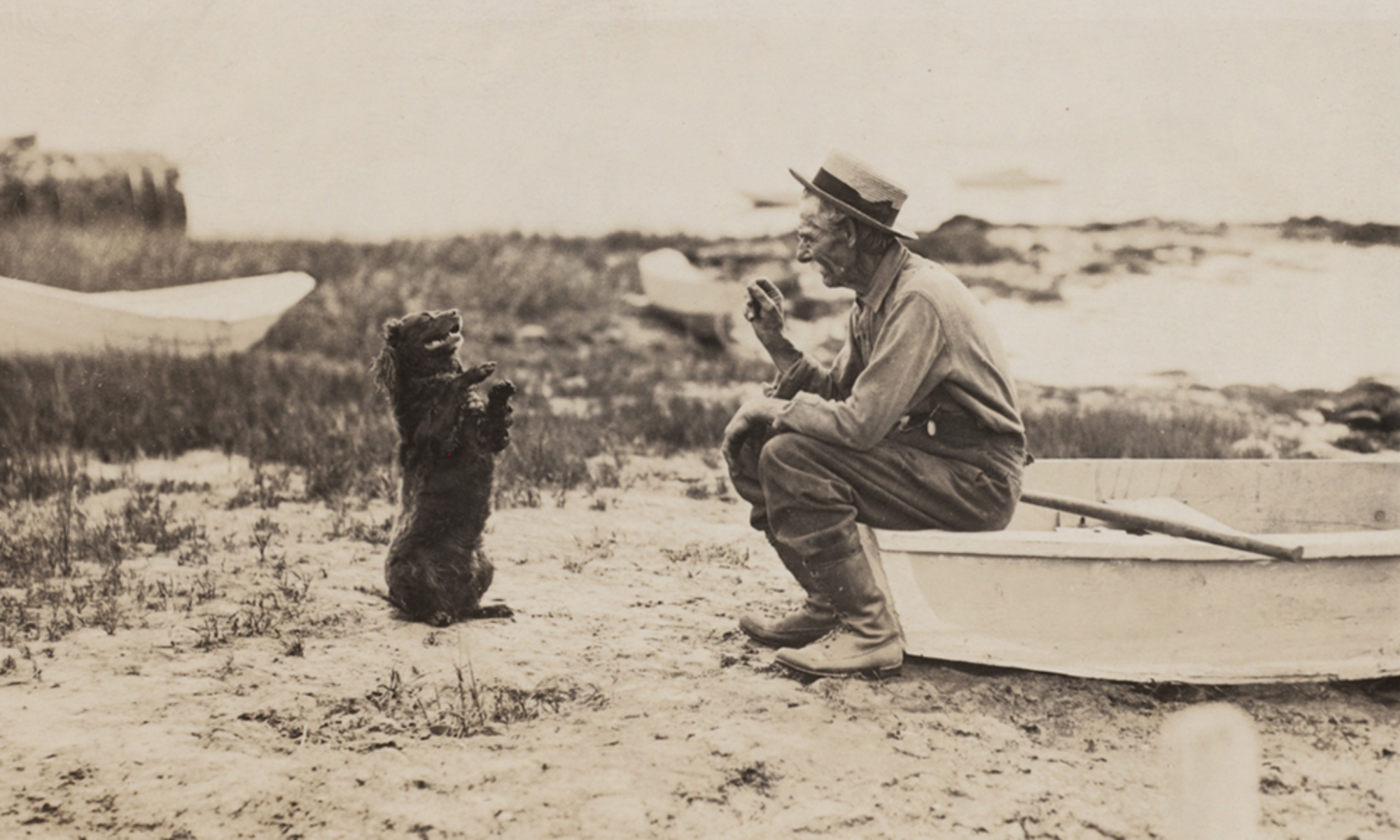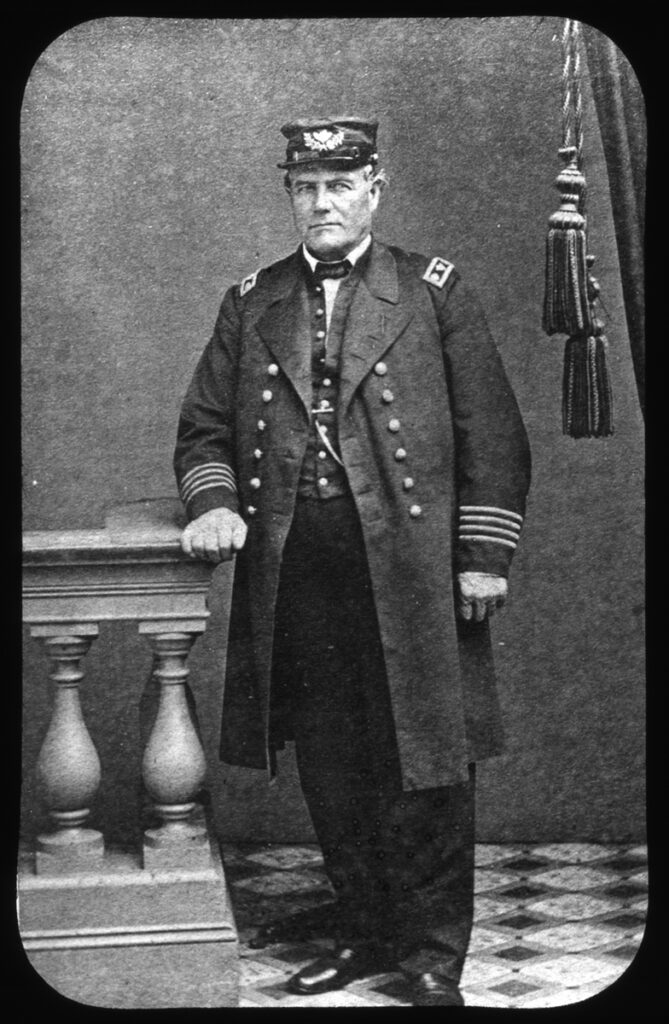
The original caption is “the dugway, Winthrop St thru sand hill”
Source: Emily Fuller Drew Collection MC16 pla-02-0215-ed-n

Kingston (Massachusetts) Public Library

“8/10/66-KINGSTON, MASS: Brandishing her own protest [sign] Mrs. June A. Ballinger of Kingston pumps mustard-filled water pistol into line of ‘Walk for Peace’ marcher who continued 8/1 their 117-mile march from Boston to Provincetown, Mass., protesti[ng] U.S. involvement in the Viet Nam war. UPI Telephoto”
Naval Constructor Melvin Simmons, born in Kingston on April 19, 1806, served as Master Carpenter for the first steam (or screw) frigate the USS Merrimack. Launched in June 1855 from the Charlestown Navy Yard, she was christened by Simmons’ daughter Mary Elizabeth, then 23.

When Virginia seceded from the Union in 1861, the US Navy burned the Merrimack, then trapped in Norfolk, to prevent her capture. A month later, the Confederates raised the hull, re-built her as the iron-clad ram CSS Virginia, and in 1862, sent her into battle with the Union’s iron-clad, the USS Monitor in Hampton Roads.
Simmons also served at Philadelphia Naval Yard, and ultimately returned to Charlestown as Naval Constructor in the Construction Corps of the Bureau of Construction and Repair. Created in 1866, the Corps gave former civilian employees a formal rank in the US Navy. Simmons’ son Frederick, then an unmarried clerk, was drafted into the Union Army in 1863. He served in the 35th Infantry, until his death on January 1, 1865 in Salisbury, North Carolina.
Melvin Simmons died in Charlestown on May 13, 1871, of apoplexy. He is buried in the Forest Hills Cemetery beside his wife Mary A. (Chase) Simmons, who lived in Kingston at the time of her death on May 10, 1890.
Source: Glass Plate Negatives IC3, photo ID: peo-09-0747-gpn
“Elder’s Spring was the water supply for the house-holds of Isaac Allerton, the Mayflower Pilgrim, and of other occupants of the farm, until it came into possession of Elder Thomas Cushman, for whom the present name was given. The old spring was a lovely spot, shaded by huge willows, and boiling up from clean, white sand, a strong and steady flow. A generation ago, Mr. John Bagnell, to make a fish or duck pool, dug away the bank, cut down the willows, and so changed the surroundings of the spring, it is quite different from what it used to be.”
Source: Emily Fuller Drew Collection MC16; quote from her notes on place names in Kingston.

In 2018, a new farmer’s market opened in Kingston. The Library’s usually there; check us out! It’s a great new venture with some interesting echos of the past.
In 1917, Kingston also had a new community market, this one located at the Point, right where Summer Street splits from Main. The Old Colony Memorial on July 13 that year invited anyone with surplus food to join in.
No matter how small an amount you may have to sell, you are invited to bring it to the market. Products of the garden, dairy, poultry, etc. in fact, anything you are engaged in producing…
Part of the national effort to increase local food production as the nation entered the First World War, Kingston’s market was sponsored by the Grange, the Patriotic Society and the Food Production Committee of the Public Safety Commission. There was no charge for selling: vendors just had to show up with their wares.
Within the first week the market was open, 17-year-old diarist Helen Foster wrote that “things sure were stirring there.”
Source: Newspapers PC19; Mary Hathaway Collection MC21
In March 1927, Emily Fuller Drew (seen here in her Tercentenary costume) took these photos of Summer Street, looking south toward the center of Town, just after Town Meeting voted to widen the street.


Summer Street had been previously straightened and/or widened in 1846, 1856, 1905 and 1922, when a number of very early houses around the Point fell victim to highway work.
This time the casualties were the gracious trees that lined and shaded the street. Emily wrote “Maples and elms lined our Summer Street in the old days..the green tunnel which was our street before the trees were cut down in 1927, to allow for widening the thorofare. Summer Street was the Boston Road which superseded the Bay Path as a highway from Plymouth to Boston.”
Her cousins Mary W. Drew and Jennie McLauthlen (Kingston’s first librarian) made their position clear in this handbill, but to no avail: the proposal was approved, the street widened, and the trees all taken down.

Sources: Photos from the Emily Fuller Drew Collection MC16. Handbill from Vertical Files OC2 “Summer Street.” Additional information from Street Files TOK6 “Summer Street.”